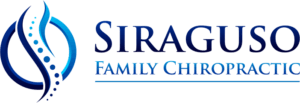Scoliosis
Scoliosis is an abnormal lateral curving of the spine as a result of stress or the axial muscles inability to control the spine. Frequently, a scoliosis patient has two curves; a primary curve, and a compensatory curve. The mild change in the curvature of the spine is often first noticed by a family member, friend or during a routine examination of children for school or sports. A change in the curve of the spine usually occurs very slowly. For this reason, it is very easy to miss until it becomes a more severe physical deformity. Those affected with scoliosis may often notice that their clothes do not fit correctly, or that their pants are longer on one side and they have an uneven waste. In addition to this, scoliosis may cause the head to lean on one side or appear off center. It may also cause the shoulder or hip to be higher than the opposite side. If scoliosis is severe it can even make it difficult for the heart and lungs to function properly, causing chest pain and shortness of breath. In most cases scoliosis is not painful, however, in some cases it can cause abdominal pain, muscle spasms, neck pain, rib pain and back pain.
Types of Scoliosis
Scoliosis may be functional or structural. Functional scoliosis, or non-structural scoliosis, is a temporary change in lateral curvature of the spine. It is typically caused by an asymmetrical difference in musculature of the spine, causing a brief lateral curvature in certain positions. Structural scoliosis is a fixed lateral curvature of the spine typically with accompanied rotation of the vertebra. Structural scoliosis is much more common than functional, and is usually considered permanent unless treatment is received. To tell the different between the two types medical professionals use an orthopedic test called Adam Sign, where the patient is asked to bend forward and touch their toes. If the thoracic spine appears even on both sides it is considered a functional scoliosis. If their appears to be a hump on one side of the thoracic spine then it is considered a structural scoliosis. Some studies report up to 80% of scoliosis cases are idiopathic (unknown) in their origin.
Treatment options for scoliosis
Scoliosis can be diagnosed using x-ray of the spine, physical examination, medical and family history. There are a number of options for treating scoliosis, such as chiropractic care, bracing, corrective exercises, and surgery. Several studies have shown that active chiropractic treatment has been successful in terms of reducing pain. Scoliosis is treated when found early, therefore, it is best to get checked right away if you suspect scoliosis.
Chiropractic care traditionally look for restricted/fixated joints in the spine. However, with scoliosis, joint mobility is not a major issue, it is the location of the joint that is misaligned. First and foremost, the joints of the spine need to be realigned through adjustments and corrective exercises. Additionally, for any long-term benefits, your brain needs to be retrained to use the spinal joints and muscles differently using whats called neuromuscular reeducation. All of these treatment options need to be in effect to see any improvement in the scoliosis for a young patient. If the patient has reached adulthood it is not likely that the scoliosis will improve, but chiropractic care can be use to help manage the patients pain and retain joint mobility.
At home therapy
See our article on lumbar inversion tables for more information on at home therapies. A teeter inversion table may be beneficial for this condition.
Schedule an Appointment
If you or any of your loved ones would like to schedule an appointment Click Here!


